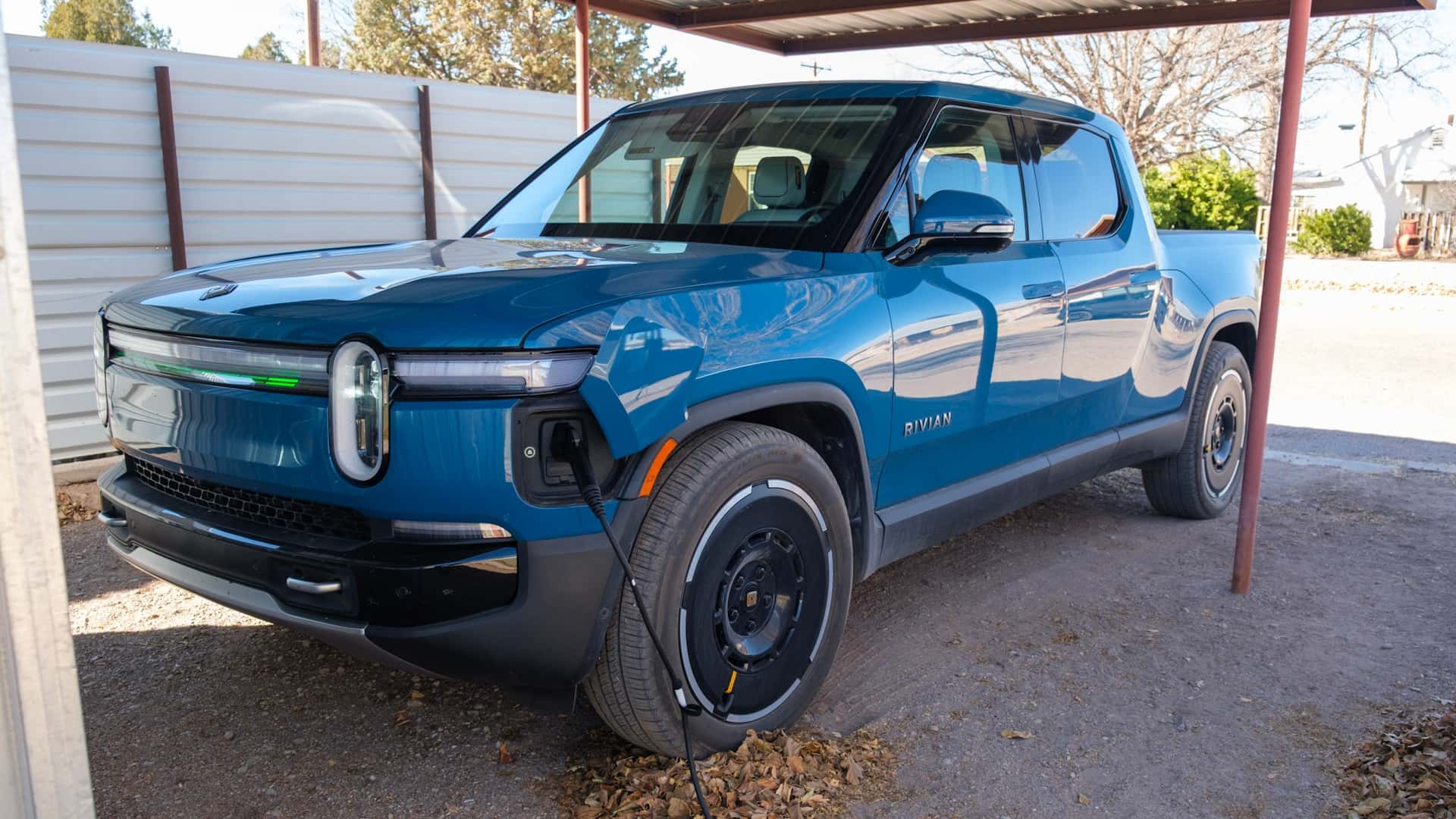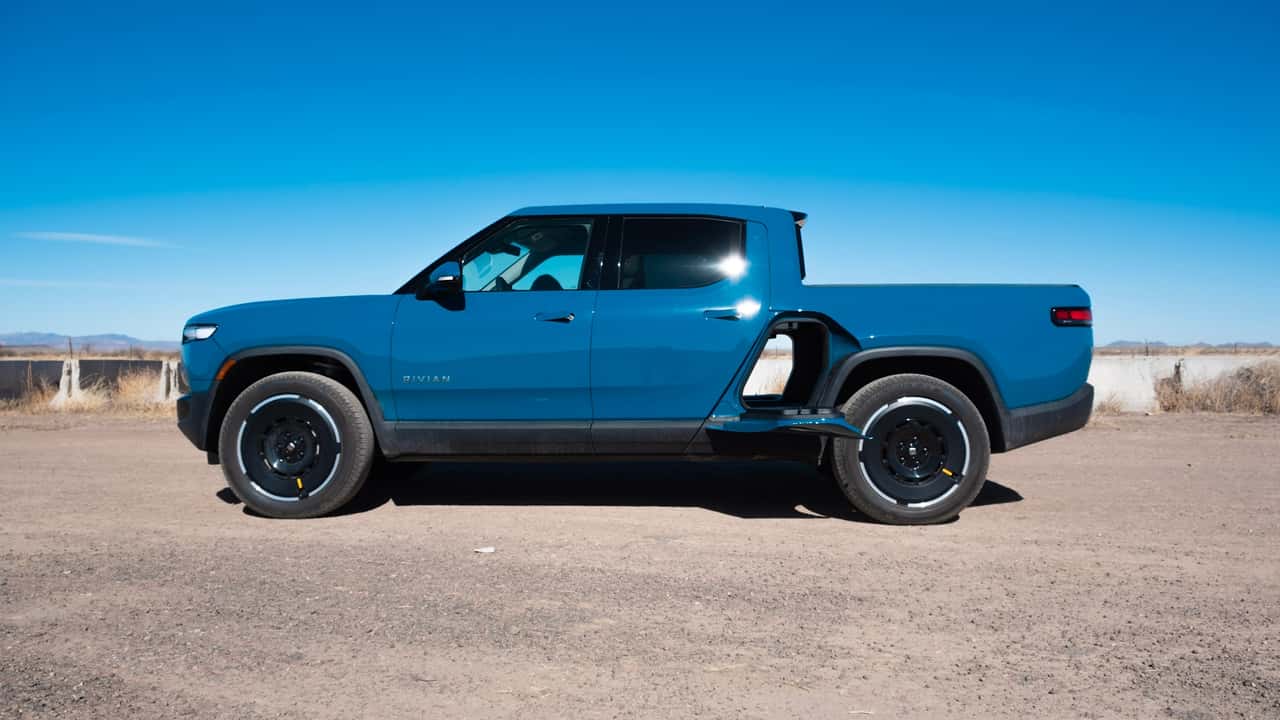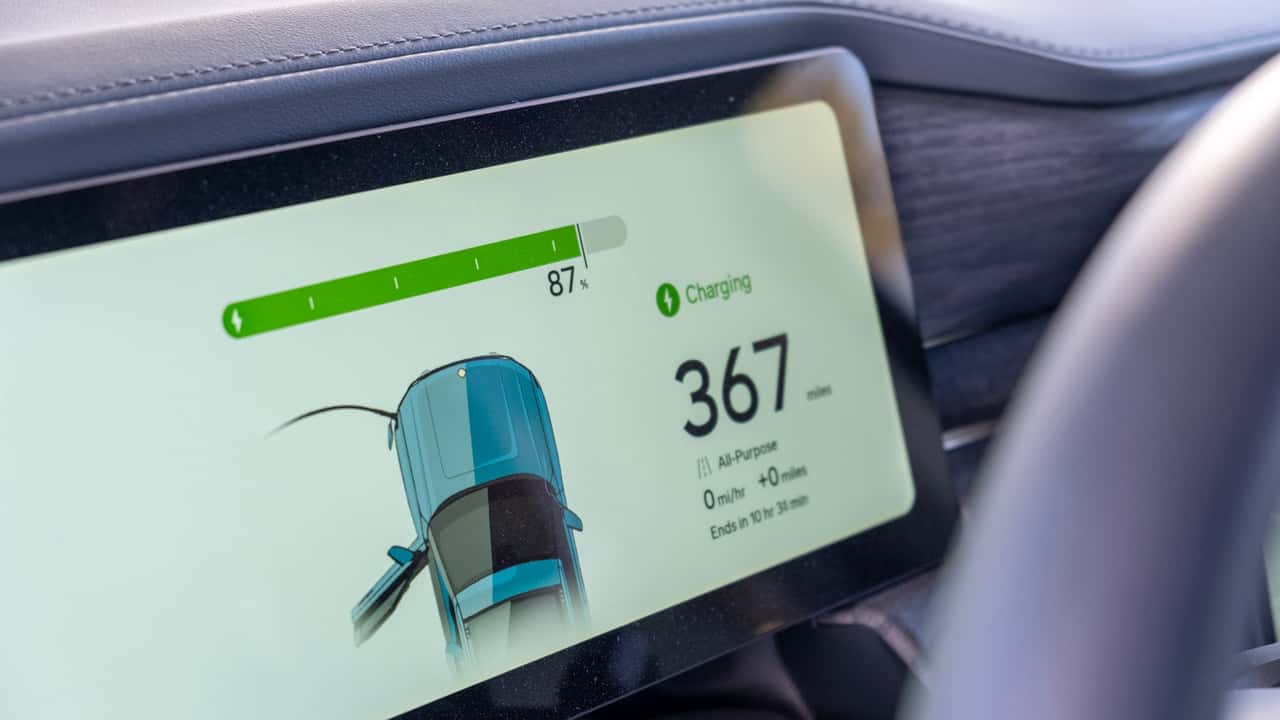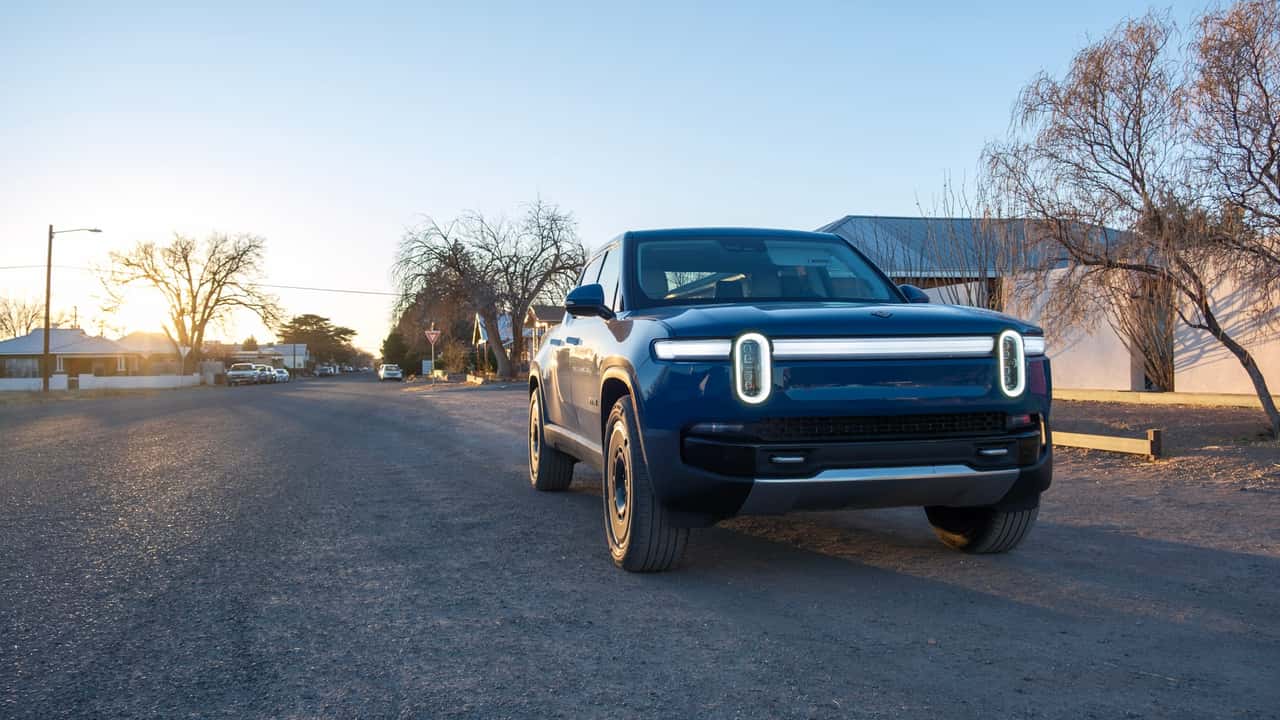Featured
- Get link
- X
- Other Apps
Why Level 1 EV Home Charging Is Surprisingly More Practical

Using an electric vehicle, often a simple wall socket can become your greatest ally. I discovered this during my journey with the Rivian R1T.
Let's be real for a second: nobody wants to sit around and wait hours and hours for their electric vehicle to charge. The fear of long charging times, along with nowhere to actually do it, is what scares many people away from owning an EV. And certainly, the time it takes to charge from a standard wall outlet—which might take anywhere from 60 to 200 hours Depending on the vehicle—it isn't particularly reassuring.
Most EV owners plug in at home and use faster Level 2 chargers to get juiced up in a matter of hours, not days. Others rely on public DC fast charging, whether regularly or on road trips, to recharge in mere minutes. Yet all EVs can also plug into a standard 120-volt wall outlet. But what good is that, really?
In fact, it's really quite good, despite what you might think. I discovered this during my road trip. heading out to the remote West Texas desert in a 2025 Rivian R1T That experience made me realize that what’s known as Level 1 charging, which is the most gradual method of electric vehicle charging available, can be incredibly handy—provided you employ it properly.
Actually, using wall charging was a lifesaver during this trip. Let me explain why.
( Full Disclosure: Rivian loaned me an R1T for a road trip over the 2024 winter holidays.)
Over the holidays, I drove about 400 miles from San Antonio to the remote town of Marfa, Texas near the Mexican border. As you might guess, there aren't many EV charging options out that way. One hotel near the house where I was staying had a Level 2 charger, but it was for guests only and I wasn't staying there. I probably could've talked my way into borrowing it a few times, but didn't want to take advantage.

No, I usually don't park like this. However, there wasn't anyone nearby.
My best bet was a Tesla Supercharger station in the town of Alpine, which I used quite often on this trip thanks to the adapter Rivian included. But that was 30 miles away before any highway range losses, and in the opposite The direction towards everything I love doing outside of Marfa. To put it briefly, whatever that entailed resulted in a wide-ranging impact nearly immediately after I left the parking area.
Fortunately for me, Rivian provided a compact mobile charging station. I opted to use this with my R1T when it was stationed in the driveway. As expected, it turned out to be exactly what I required.
Level 1 Charging: What To Expect
A typical 120-volt household electrical socket usually delivers between 1 to 2 kilowatts (kW) of power. This can add roughly three to five miles of driving distance for every hour of charging.
With a 149-kilowatt-hour battery pack (of which 140 kilowatt-hours are usable), similar to the one in my R1T Dual Motor Max Pack test unit, you would expect approximately 30 to 40 hours to recharge from 20% to 80% of its capacity It depends on the speed. In the best case, around 2 kilowatts of electricity per kilowatt-hour of battery capacity. Does that make sense?
That's significantly lower compared to my personal ChargePoint Level 2 charger, which maintains an output of 7.2 kW. This allows me to fully recharge my Kia EV6, equipped with a 77.4 kWh battery, within approximately 10 hours. However, I usually only take about five or six hours for charging. I have never let the vehicle’s battery drain completely down to zero percent, nor do I plan to.

2025 Rivian R1T Review
If you’re new to electric vehicles, you might dismiss Level 1 home charging as being overly sluggish. However, keep in mind that what does your car do for the majority of the day? It’s simply staying put in the parking spot.
As it remains stationary, this implies you can “recharge” it. This feature serves as a sort of hidden superhero ability for electric vehicles (EVs) that not many discuss. In contrast to gasoline cars, which require you to go out and fill up with fuel, EVs offer a different convenience. for 95% of the time when the car is stationary , it can continue charging its battery as long as it remains close to a power source.

2025 Rivian R1T Review
This proved incredibly helpful for me. During my travels, I didn’t spend every moment behind the wheel. Instead, I explored towns on foot, visited local attractions, enjoyed meals and drinks with loved ones, or took pictures. Just like any car would do, the R1T remained parked quite often throughout the day. So, I thought why not let it charge whenever it was sitting idle.
It proved highly beneficial. Simply using the regular wall outlet, I managed to add approximately 30 to 40 additional miles of range each day, mostly during nighttime charging while I slept. Since I maintained a charge level above zero percent, I avoided having to recharge from empty. Additionally, the access to a Tesla Supercharger meant I always had residual battery life available as backup. Consequently, relying on the standard wall outlet provided ample range for my everyday tasks and outings.
I've noticed that electric vehicle (EV) charging isn’t usually an urgent “it’s depleted, so I should recharge immediately” situation as with gasoline vehicles. Instead, it's more focused on ensuring you get just enough charge for your specific needs. Daily, I didn’t require the R1T to be fully charged all the time; rather, I needed sufficient range to meet my travel requirements without worry. Charging via the wall socket provided ample daily assurance until I could reach a Tesla Supercharger again. This approach encourages a more strategic mindset regarding power consumption, which can actually be quite beneficial.
The additional 30 to 40 miles provided each day through standard home charging were enough to cover much of my journey. This explains why quite a few electric vehicle owners rely solely on Level 1 home charging for their everyday needs. My coworker Kevin Williams has covered this topic thoroughly. He lives in an apartment and frequently opts for slow charging.
Consider individuals who possess a compact electric vehicle equipped with a smaller battery, or those who use an electric vehicle as their secondary or tertiary mode of transportation mainly for local trips and errands within the city. What reasons might they have? not Why use a wall outlet, particularly when you don’t require something as quick or expensive as a Level 2 home charger?

Level 1 portable charger
For me, at least, I do enough driving at home that a Level 2 charger is a necessity. I think living solely with Level 1 charging wouldn't really suit my needs. But now, I think of it instead as another tool—a very powerful and convenient tool—in my arsenal. This is especially true on road trips and vacations. If you're going to a new place and you aren't guaranteed to have tons of fast charging options along the way, I would very strongly recommend bringing a portable wall charger. Even if it's not the fastest option, it's better than nothing and may keep you from real trouble.
I'll add the typical caveats here and say that it's imperative to make sure the electrical system you're charging from is safe, modern, robust and able to handle the load If you’re staying at an Airbnb, make sure to confirm with the host whether EV charging is acceptable. It likely won't make a significant impact on their electricity bill. .)
Certain manufacturers warn against using an extension cord for such purposes. For prolonged use involving significant power draw, extension cords may pose issues. Although an industrial-quality, thick-gauge extension cord might work better, it’s advisable to follow the instructions provided in your owner's manual first. If you still feel unsure, consult an electrician regarding safe options for extended cables. Do not simply rely on whatever extension cord happens to be available. While level 1 charging can assist in keeping you mobile, damaging your charger or causing a fire could exacerbate the situation considerably.
As long as safety permits, consider using Level 1 wall charging, particularly during your upcoming electric vehicle road trip. Keep this in mind: whenever it’s stationary, there might be an opportunity to plug in your vehicle.

2025 Rivian R1T Review
Contact the author: patrick.george@insideevs.com
More EV News
- The Federal Electric Vehicle Charger Initiative Might Falter Just as It Began to Show Results.
- Ioanna States That We Require Chargers Where 'Reliability Is Not Even An Issue'
- Canadian buyers of Ford electric vehicles can receive a complimentary home charger along with free installation.
- 2025 Rivian R1T Review: Here’s Why Rivian Will Succeed
- Rivian's CEO States That Hands-Free Driving Will Arrive Within Weeks
- The Rivian R1T's Gear Tunnel Is Why I'm Excited About EVs
- Get link
- X
- Other Apps
Popular Posts
Unmasking Misinformation: Journalist’s Quest for Verified Truth (International Edition)
- Get link
- X
- Other Apps
PTA Clarifies: X Disruption (Formerly Twitter) Unrelated to Local Internet Filtering – International Edition
- Get link
- X
- Other Apps
Comments
Post a Comment